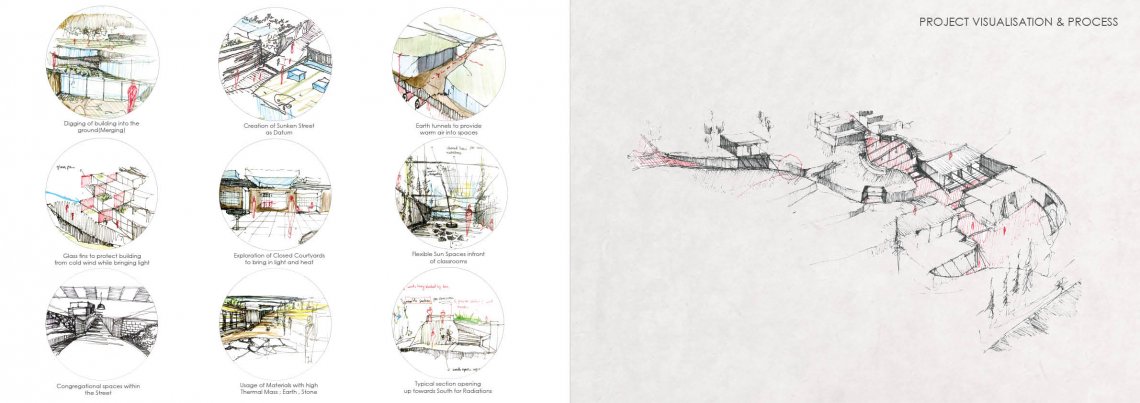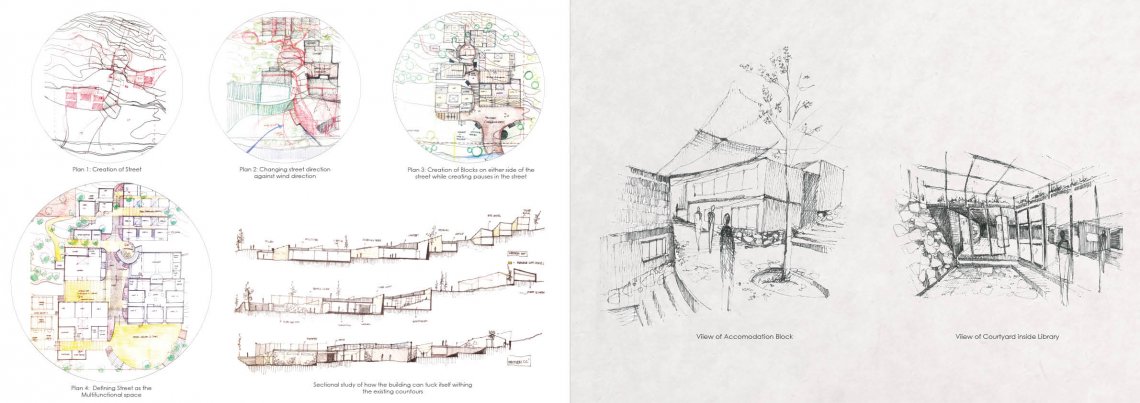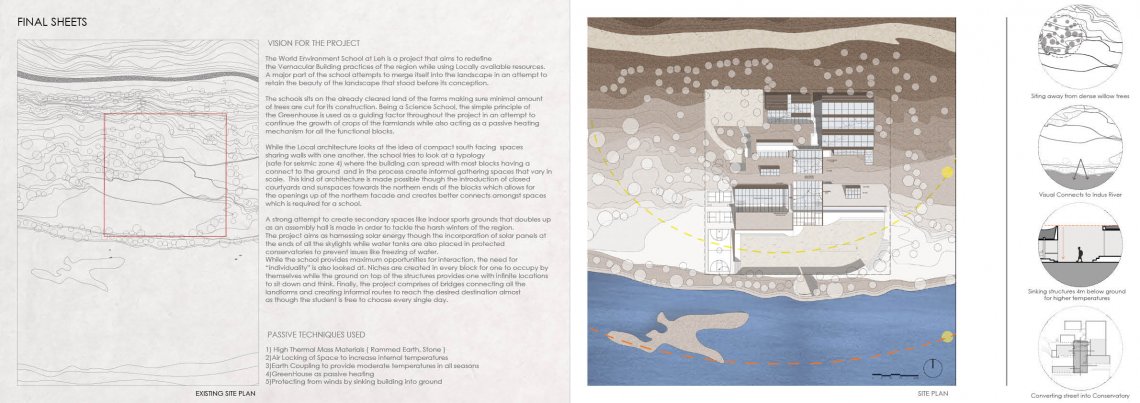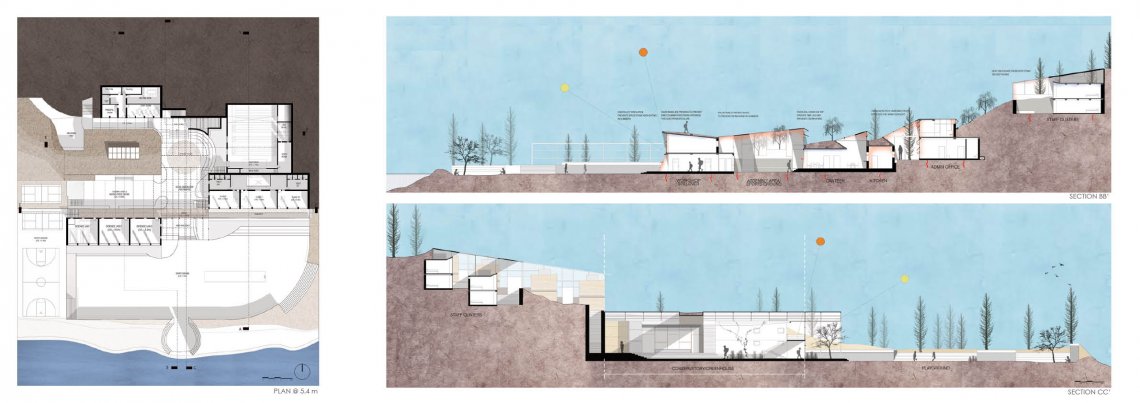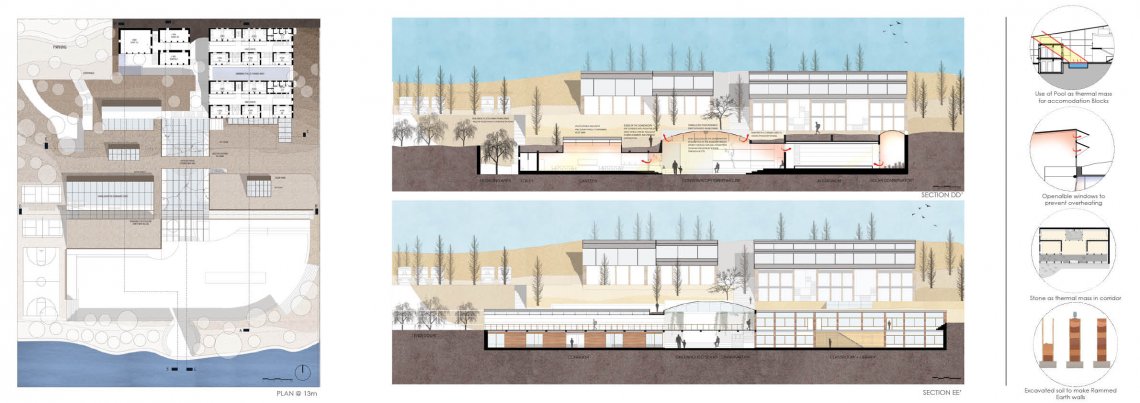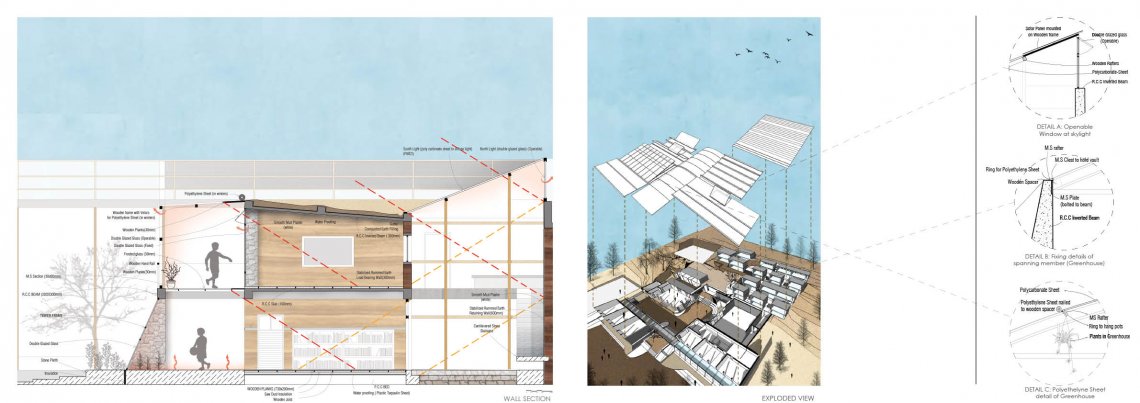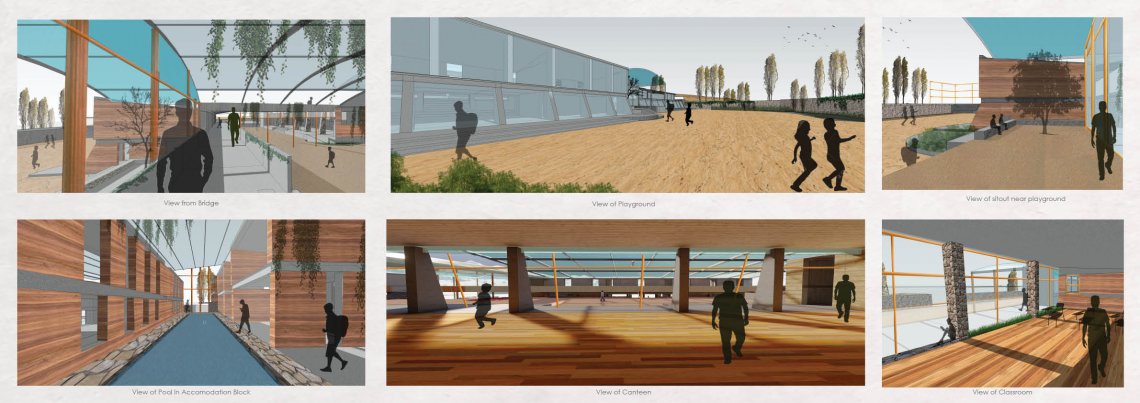Your browser is out-of-date!
For a richer surfing experience on our website, please update your browser. Update my browser now!
For a richer surfing experience on our website, please update your browser. Update my browser now!
The World Environment School at Leh is a project that aims to redefine the Vernacular Building practices of the region while using Locally available resources. A major part of the school attempts to merge itself into the landscape in an attempt to retain the beauty of the landscape that stood before its conception. The schools sits on the already cleared land of the farms making sure minimal amount of trees are cut for its construction. Being a Science School, the simple principle of the Greenhouse is used as a guiding factor throughout the project in an attempt to continue the growth of crops of the farmlands while also acting as a passive heating mechanism for all the functional blocks. While the Local architecture looks at the idea of compact south facing spaces sharing walls with one another, the school tries to look at a typology (safe for seismic zone 4) where the building can spread with most blocks having a connect to the ground and in the process create informal gathering spaces that vary in scale. This kind of architecture is made possible though the introduction of closed courtyards and sunspaces towards the northern ends of the blocks which allows for the openings up of the northern facade and creates better connects amongst spaces which is required for a school. A strong attempt to create secondary spaces like indoor sports grounds that doubles up as an assembly hall is made in order to tackle the harsh winters of the region. The project aims as harnessing solar energy though the incorporation of solar panels at the ends of all the skylights while water tanks are also placed in protected conservatories to prevent issues like freezing of water. While the school provides maximum opportunities for interaction, the need for “individuality” is also looked at. Niches are created in every block for one to occupy by themselves while the ground on top of the structures provides one with infinite locations to sit down and think. Finally, the project comprises of bridges connecting all the landforms and creating informal routes to reach the desired destination almost as though the student is free to choose every single day.

